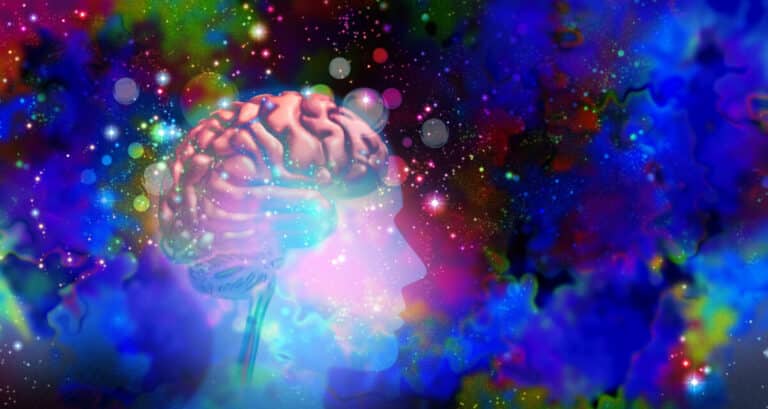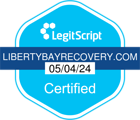Hallucinogens and Their Harmful Effects
Hallucinogens are drugs that change an individual’s perception of their environment, thoughts, and emotions. They are frequently divided into dissociative drugs, such as PCP, and classic hallucinogens, such as LSD. Hallucinogens, sometimes called psychedelic substances, can cause people to perceive things that aren’t real. As a result, they can impair a person’s ability to think logically and occasionally lead to strange and risky behavior.
Some hallucinogens are artificial, while others occur naturally in plants or mushrooms. In ancient times, individuals used hallucinogens in rituals for healing or religious purposes. More recently, people started using these drugs for social or recreational activities. Today people may use them to relieve stress, experience spirituality, feel different, or get high. Hallucinogen-related substance use disorders (SUDs) are less prevalent that involve drugs like opioids.
Hallucinogens: How Do They Work?
Classic hallucinogens change perception by interacting with the neurotransmitter serotonin’s brain circuits. In addition, these substances interfere with the prefrontal cortex, which controls mood, cognition, and perception. Hallucinogens also affect other areas that control arousal and physiological reactions to stress and panic.
How Pervasive Is Abuse of Hallucinogens and Dissociative Substances?
It appears that more Americans than ever are using hallucinogenic drugs. It is estimated that more than 5.5 million Americans aged 18 and older and over 3 million adults 26 and older use hallucinogens.
In a study published in 2022 in the journal “Addiction,” researchers determined that from 2002 to 2019, the number of Americans using hallucinogens has climbed among adults but declined among teenagers. For example, the 2020 National Survey on Drug Use and Health reported that 7.3% of adults aged 18-25 reported using hallucinogens in the previous 12 months.
The market for psychedelic drugs in the United States was estimated to be worth $4.29 billion in 2021, and it’s anticipated to
Short-Term Effects of Hallucinogens
When using hallucinogenic substances, people may experience feelings, noises, and sights that don’t exist yet seem real to them. Some hallucinogenic drugs act quickly, while others take a few hours. The effects can persist for up to 12 hours and usually start 20 to 90 minutes after consumption. Also, the higher the dose of hallucinogenic substances consumed, the more it can affect the user’s personality, attitude, and environment.
Short-term effects of hallucinogens can cause users to have temporarily distorted senses: Seeing, hearing, touching, or smelling can be abnormal. Users can also have intense emotions and perceive time as passing more slowly.
Other short-term effects can include:
- Restless and dizziness
- Impulsivity and quick emotional changes
- Accelerated heart rate, body temperature, and blood pressure
- Dry mouth, lack of appetite, and sweating
- Tremors, numbness, and weakness
Long-Term Effects of Hallucinogens
When users abuse hallucinogens over a long period, tolerance can develop. According to studies, some users may quickly build a tolerance to the potent hallucinogen LSD. As a result, users may need to take progressively higher doses of the drug to get the same results. According to research, a user who becomes tolerant of one drug belonging to the hallucinogen class could also become tolerant of other substances in the same category. For instance, someone with a tolerance to LSD could be tolerant of psilocybin and mescaline. Yet, substances like amphetamines and marijuana that influence different neurotransmitter systems are not affected by tolerance to hallucinogens.
Classic hallucinogens have been linked to two long-term adverse effects: persistent psychosis and hallucinogen-persisting perception disorder (HPPD), sometimes known as “flashbacks.” Although each illness is uncommon, it occurs unexpectedly, it can happen more than is believed, and the two disorders can co-occur. Although the precise origins are unknown, these diseases occur more in individuals with a history of psychiatric issues. However, they can affect anyone who has used a hallucinogen even once.
Long-term effects of persistent psychosis can include:
- Abnormal vision
- Confused cognition
- Paranoia
- Mood swings
The long-term effects of hallucinogen persisting perception disorder include hallucinations, visual problems like seeing halos or paths connected to moving objects and symptoms that might be misinterpreted for neurological illnesses like a stroke or brain tumor.
Classic Hallucinogens
DMT (N, N-dimethyltryptamine)
Hallucinogenic tryptamine naturally exists in various plants and animals. Because of its potent psychedelic effects, some call it the “spirit molecule.” However, the drug is not approved for medical use and has a significant potential for misuse. It also has no medicinal purpose acknowledged or authorized by the federal government.
LSD (D-lysergic acid diethylamide)
A powerful synthetic substance that causes hallucinations. It is derived from ergot alkaloids. LSD leads to severe abnormal behavior, perhaps because of its capacity to block serotonin’s activity. However, the drug’s precise mechanisms are not known. As recently as the 1960s, LSD was used experimentally in medicine, and some modern researchers hope to use it for therapeutic purposes again.
Psilocybin (4-phosphoryl oxy-N, N-dimethyltryptamine)
Chemicals derived from specific dried or fresh varieties of hallucinogenic mushrooms found in Mexico, South America, and the southern and northwestern United States. As an indole-alkylamine, psilocybin is categorized as tryptamine. These chemicals are misused for their hallucinogenic and euphoric properties. They induce a “trip” effect and have a structure comparable to that of LSD. The impact on the central nervous system’s serotonin (5-HT) receptors likely causes hallucinogenic effects. The chemicals psilocybin or psilocin are found in approximately 180 mushrooms.
Peyote (mescaline)
A small, spineless cactus. The hallucinogen mescaline is its main ingredient. Since recorded history, peyote has been a cornerstone of Indigenous peoples’ sacred rituals in northern Mexico and the southwestern United States. Peyote and mescaline abuse can lead to hallucinations, a changed sense of space and time, altered body image, and illusions to varying degrees. Additionally, users may feel a sense of euphoria, occasionally followed by anxiety.
251-NBOMe
Often used as an alternative to LSD or mescaline. NBOMe, often known as “n-bomb” or “smiles,” is a potent synthetic hallucinogen. This drug comes in various forms, but 25I-NBOMe, sometimes known as “25I,” is the most popular. Even a tiny dose of the drug might have effects that last up to 12 hours or more. At low doses, NBOMe has a psychedelic effect comparable to LSD. However, users claim that the drug’s side effects and after-results are worse than those of LSD. 25I-NBOMe’s effects also resemble those of methamphetamine. The size of six little grains of common table salt corresponds to a dosage of 750 micrograms, regarded as a moderate to high dose.
How Do Dissociative Drugs Work?
According to research, dissociative drugs like PCP, ketamine, and DXM impair the brain’s neurotransmitter glutamate functions at certain N-methyl-D-aspartate (NMDA) receptors. These receptors are found throughout the brain nerve cells. Glutamate is a crucial component of cognitive functions, including learning and memory, emotion, and pain perception. Additionally, the neurotransmitter dopamine is affected by PCP.
Short-Term Effects of Dissociative Drugs
Dissociative drugs can cause users to experience floating sensations; visual and auditory abnormalities; dissociation, or feeling alienated from reality. Other side effects of dissociative drug use are anxiety, memory loss, and poor motor function, including bodily tremors and numbness. These unexpected side effects depend on the drug’s dosage, which often takes effect minutes after consumption and persists for several hours. Some users claim to have side effects for days.
Low doses of dissociative drugs can cause hallucinations as well as:
- Numbness
- Nausea, vertigo, and vomiting
- Sensory perceptions, including changes in the user’s perception of sight, sound, form, time, and body image
- Detachment from self and surroundings
High doses of dissociative drugs can cause:
- Memory loss
- Severe panic, fear, worry, paranoia, vulnerability, inflated strength, and aggressiveness
- Harmful fluctuations in body temperature, respiration, heart rate, and blood pressure
Long-Term Effects of Dissociative Drugs
Although the long-term use of most dissociative drugs has not been thoroughly studied, research indicates that repeated PCP use can result in tolerance. Also, users can experience withdrawal symptoms, including yearning for the drug, headaches, and profuse sweating when drug use is suddenly stopped. Other side effects of chronic PCP use, which may last for a year or longer after use ceases, include:
- Enduring speech problems
- Memory loss
- Sadness
- Suicidal thoughts
- Anxiety
- Social disengagement
Common Dissociative Drugs
Ketamine
A dissociative anesthetic used in both human and veterinary medicine. Ketamine is a drug that can be used as an injectable liquid and is commonly known as special K, super K, and vitamin K, among other nicknames. When used illegally, ketamine can be ingested or evaporated to create a powder that users can snort. Unfortunately, users can place ketamine in beverages without being noticed because it has no flavor or smell. Ketamine can induce hallucinations, amnesia, and dream-like experiences. The sensations experienced by drug users range from a floating sensation to feeling detached from their bodies.
Dextromethorphan (DXM)
Over-the-counter (OTC) cough suppressants commonly used in cold treatments. Unfortunately, teenagers and adults sometimes misuse DXM in excessive doses to induce euphoria and auditory and visual hallucinations. Robo-tripping or “skittling” are slang terms used to refer to illicit DXM consumption. These words are taken from two of the most frequently abused remedies: Coricidin and Robitussin. Abusers of DXM claim to have increased perceptual awareness, distorted temporal perception, and visual hallucinations.
PCP (Phencyclidine)
A common illicit hallucinogenic street drug. It is a white powder that can be dissolved in alcohol or water. You can get PCP as a powder or liquid. PCP is a drug that affects your brain and mood, conduct, and perspective on the world around you by acting on your central nervous system. Scientists believe that PCP prevents specific brain chemicals from functioning normally.
Salvia (Salvia Divinorum)
An herb from the mint family and is used frequently for its hallucinogenic properties. It originates in southern Mexico and other regions of Central and South America. The Mazatec tribe has long used it in ceremonial rituals. Salvinorin A, the main hallucinogenic component of salvia, has made it one of nature’s most potent drugs. This drug has several side effects, including hallucinations, vertigo, and visual abnormalities. Salvia, Sally-D, and Maria Pastora are some of its street names.
Dangers of Hallucinogen Use
Intoxication from hallucinogens might result in accidents, strange or unsafe conduct, or suicidal thoughts; abuse or misuse can be detrimental with any drug or medication. Overdoses of classic hallucinogens like LSD, psilocybin, and mescaline are uncommon. However, dissociative substances like phencyclidine (PCP) or ketamine have a higher overdose risk. Additionally, high doses can cause other bodily harm. For example, using DXM in substantial amounts to produce hallucinogenic effects can harm the cardiovascular and neurological systems.
Treatment for Hallucinogen Use Disorder
Although there are no drugs with FDA approval for treating hallucinogen misuse, multiple forms of therapy are accessible. The most popular treatment is behavioral therapy, which has excellent potential for treating drug use disorders.
Additional methods, such as cognitive behavioral therapy (CBT), contingency management, and motivational enhancement, can help increase drug users’ motivation for sobriety. It can also improve their coping and communication skills, hone their problem-solving abilities, and increase their capacity to function in different spheres of their life while reducing the likelihood of relapse.
Hallucinogen-persisting perception disorder (HPPD), in which flashbacks may occur spontaneously, has no known treatment. To treat psychoses, a medical specialist can administer several antidepressant and antipsychotic medications. Another excellent treatment option is psychotherapy, which may assist patients in overcoming any anxiety or bewilderment they may be experiencing because of visual disturbances or long-term side effects of LSD use.
Liberty Bay Recovery Center
Liberty Bay Recovery Center in Portland, Maine, is a top drug and alcohol detox facility. We provide safe and supportive medical detox services. Our professionals have years of experience helping people detox from alcohol and drugs. We know that the fear of the withdrawal process is one of the main barriers to recovery because we have recovering addicts on our staff.
Many drug and alcohol abusers won’t stop using even if they’re ready to stop because they want to avoid the severe side effects of the withdrawal process. Some individuals even attempt to recover from addictions at home, going through days of misery and harsh withdrawal before giving in and returning to drug use. Our team is compassionate and understands what it takes to be on the road to recovery. Trust us to guide you to your best quality of life.






